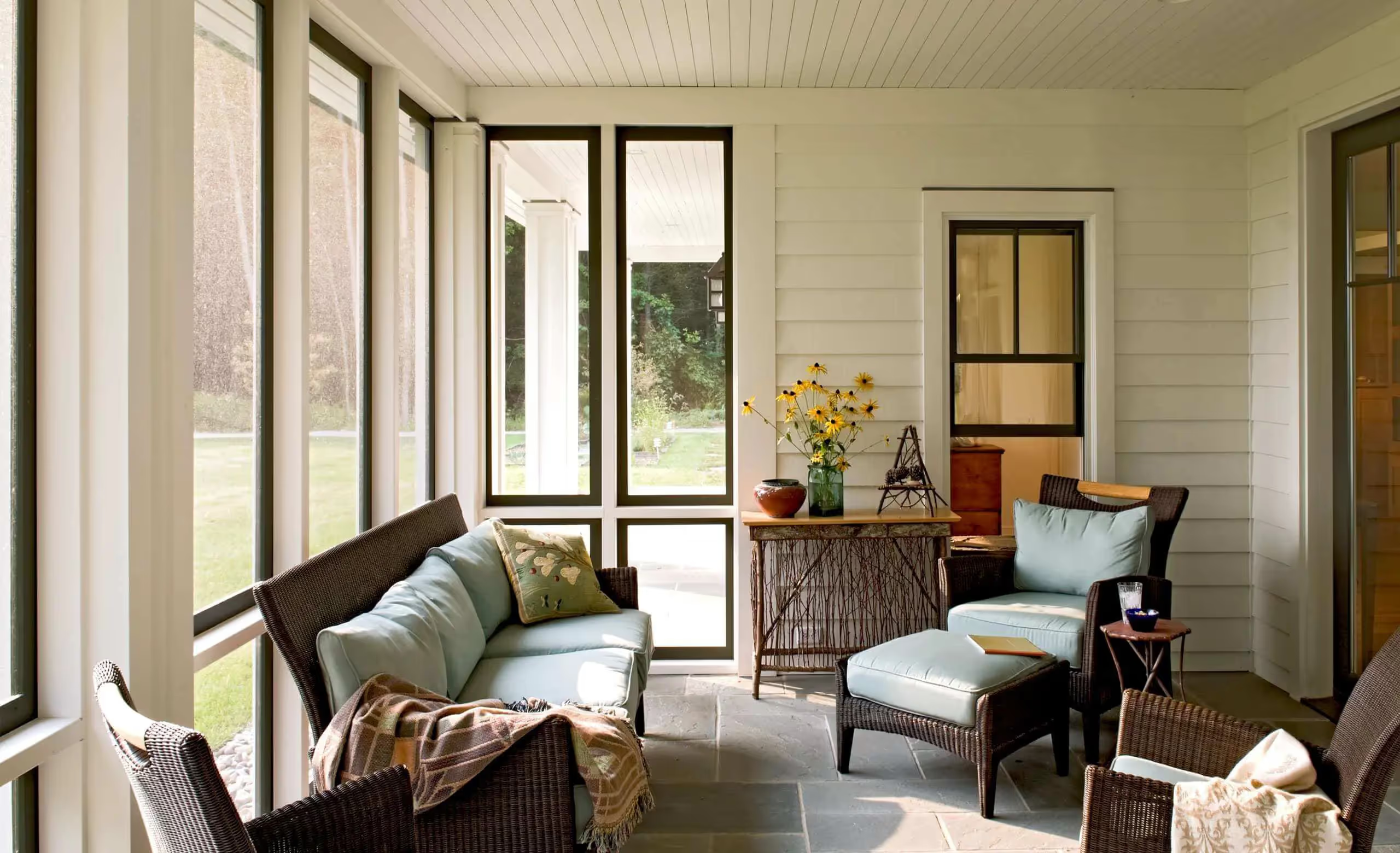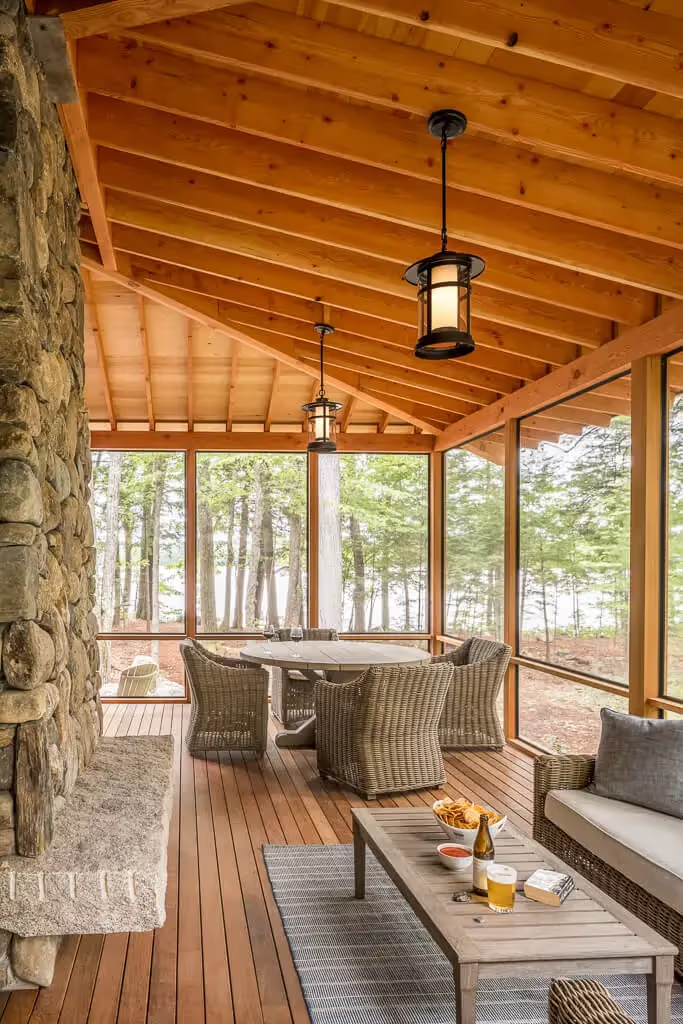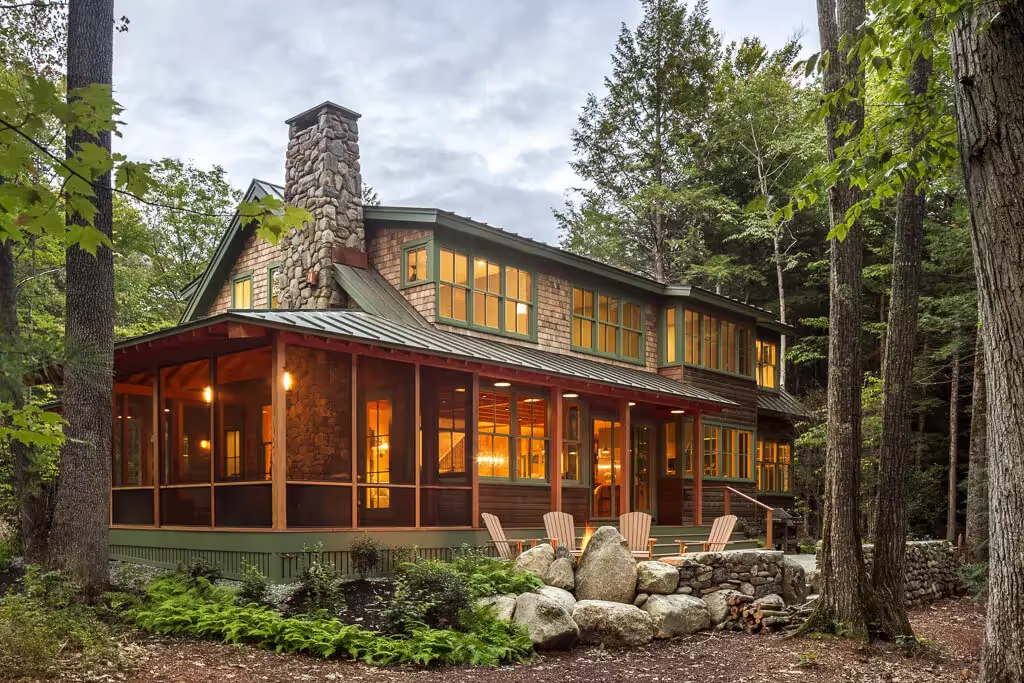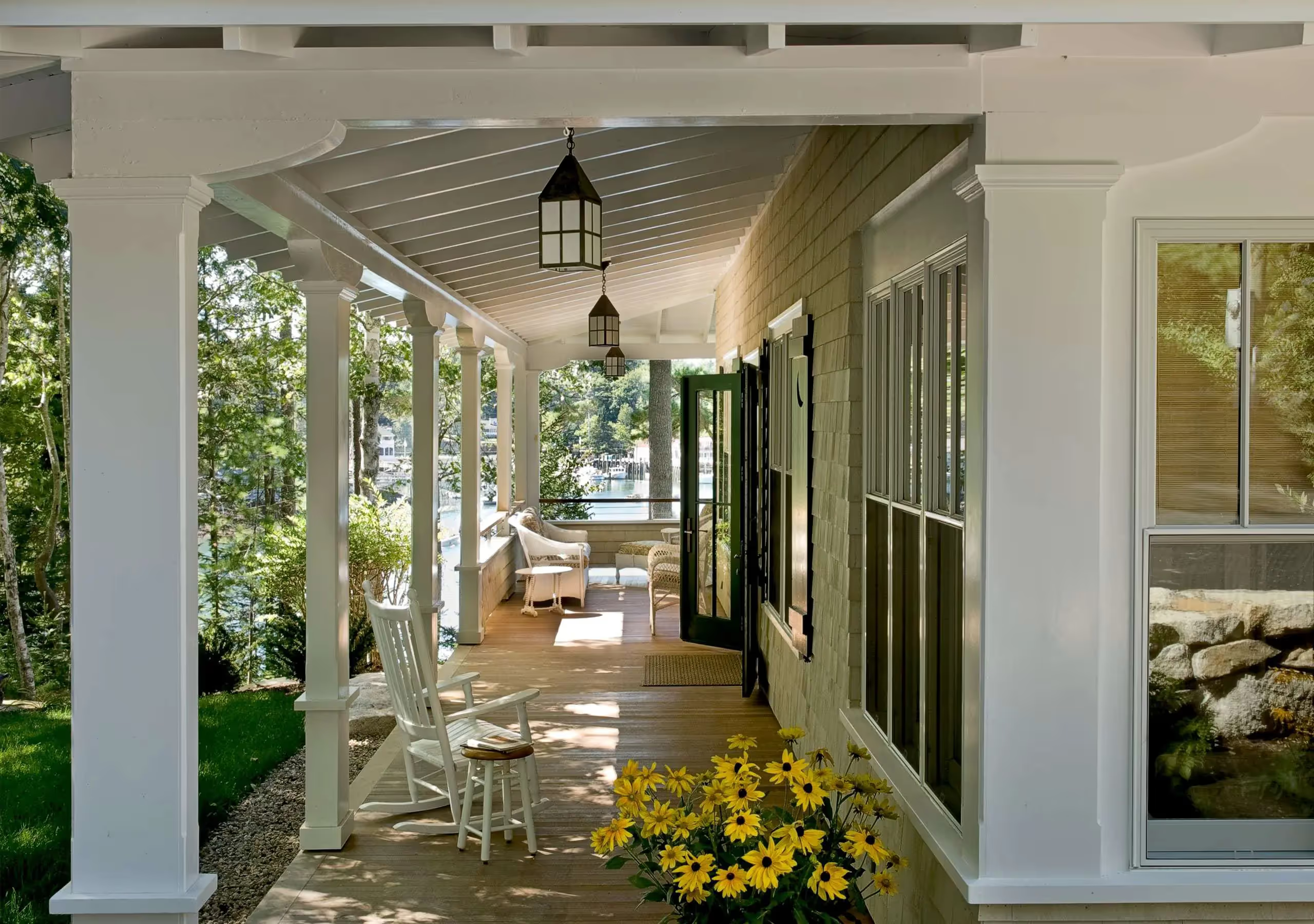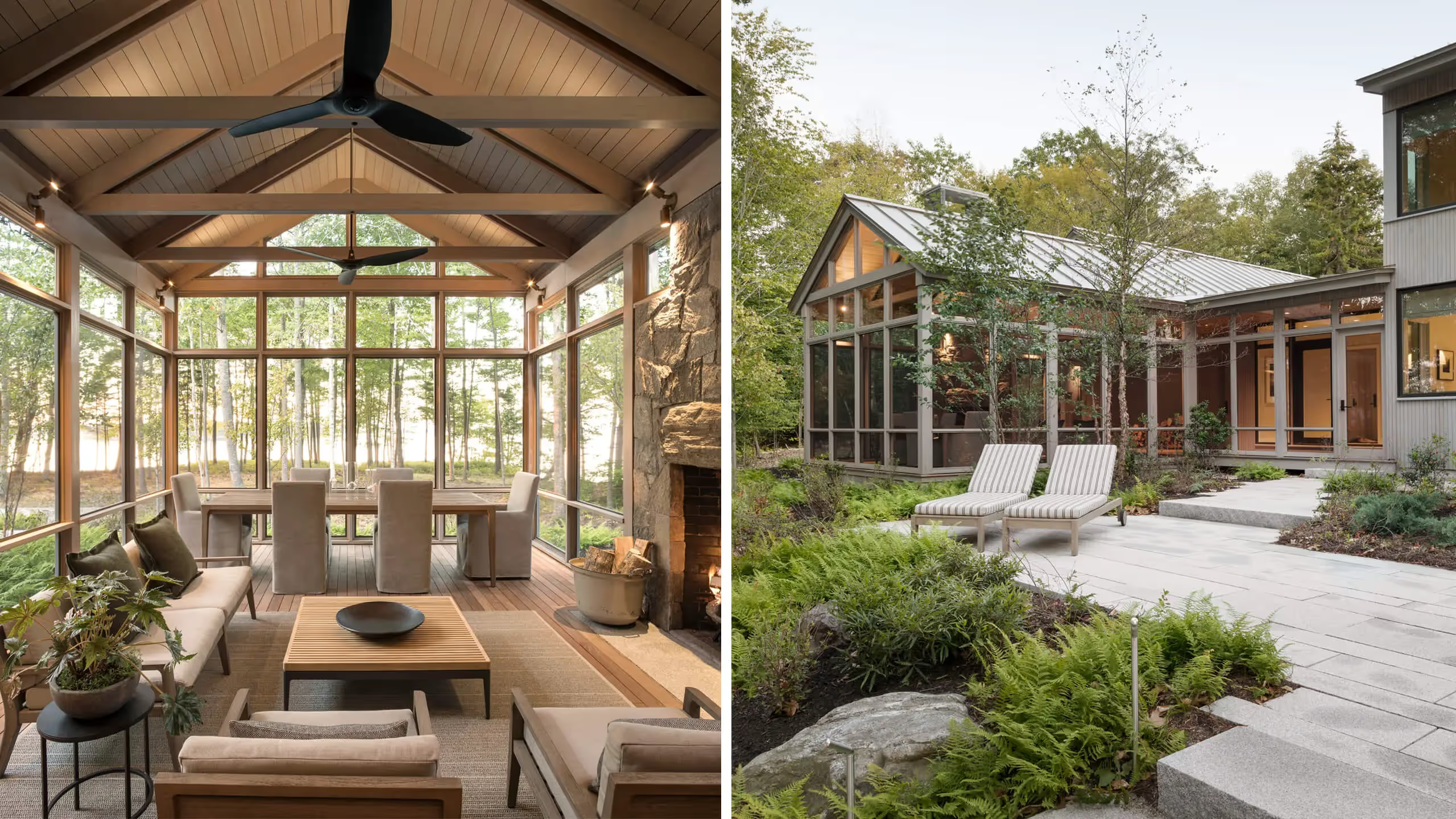Porches: A Link Between Inside & Out


It’s prime porch season here in Maine. But summer isn’t the only time a porch can be enjoyed. Porches can offer comfortable, outside living into the spring and fall months as well. And at about half the cost of interior rooms, a porch is an affordable way to extend a home’s living space. A porch eases the transition from the outside world to the inside world—a place to kick off your boots, leave your bike, or curl up and read a book.
With the overhead cover it provides, a porch brings an extra level of protection and comfort while still having an outside feel. Porches link indoors and outdoors, dry and wet, warm and cold, calm and windy. Within this in-between space you can still appreciate the elements, without having to be out in them. A porch and its associated roof afford protection for large glass openings into a New England home that is subject to harsh weather conditions. For example, the very large glass doors and openings into Spurwink Retreat’s living space would not have been feasible without the protecting porch roofs above.
With our site-specific approach, we design a porch like the rest of the house: to take advantage of the particular property it’s located on. In addition to making excellent protected entries for a front or back door, porches are a great passive-solar application. We often place porches on the south side of a home to act as a sunshade in the summer months when the sun is high in the sky, and in the winter when the sun is low in the sky, to allow sunlight to enter and warm the home. A screened porch on the west side of a house, where sun angles are low, can also shade and cool the home in all seasons. A glass porch on the east side of a house with low sun angles can heat the home in all seasons. Typically we’ll locate a three-season porch on the southeast side of a home because it gets early sun and will not overheat at the end of the day. For example, we designed Cole Farm Residence’s porch on the southeast corner of the home where it gets warming sunlight early in the day, throughout the middle of the day, and into early evening. This affords some comfort for this space into the shoulder seasons, and the space is even comfortable on a nice winter day. (On this particular project, insect screens can also be swapped out for glass panels during the winter to make the porch usable on mild winter days.)
Not only is a porch an extension of a home’s living space, it’s also an extension of a home’s architecture, forms, and materials. In a contemporary design like Englishman Bay Retreat, the roof cantilevers beyond the posts and appears to float above the living space. In a traditional design like High Head Cottage, the roof and details of a porch resemble the trim, siding, and corner boards and eaves of the home. And in a more rustic home, we design porches made of natural materials that weather similarly to the rest of the camp, like in Pleasant Lake Camp.
Because they are typically one story in height, porches can bring the overall scale of a home down to something that feels more human-scaled and welcoming. If a porch is too big it may detract from the interior living spaces by taking too much light or extending too far and impacting the sightlines from inside. We also design porches to be consistent with the anticipated use of the home: a summer home, for example, should get a big porch, whereas a four-season winter home should get a smaller porch. Porches can also bring architectural order to a building facade that might be more unordered beyond or behind the porch structure. The porch at Pinewold Cottage is a good example of this.
We like to specify low-maintenance, rot-resistant, natural materials for porches: white cedar, red cedar, fir, stone, or sustainably resourced tropical hardwoods like Ipe. The natural materials are consistent with the natural outside character of the porches. We often use cable rail or rod stock balusters and handrails to make the railings and porch guards as transparent as possible to preserve the view. For an extra level of protection and comfort from Maine’s bug population, porches can be filled in with insect screening, like we did for the screened porch at the Casco Bay Island Retreat and Spurwink Retreat. And a porch can be further customized depending on a client’s needs with built-in benches, glass panels, lighting, heating (a fireplace or wood stove), and—of course—a comfortable, cozy place to sit.

